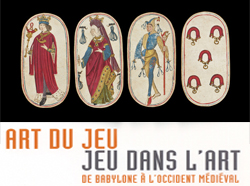
For Europe based players, the Musee de Cluny in Paris is hosting a fascinating exhibition entitled “The Art of Games and Games of Art from Babylon to Medieval Europe” which runs until the 4th of March 2013. The exhibition boasts a whopping 250 displays of gambling artefacts gathered from countries across the globe over the last four millennia.
It is interesting to note that as they do now, legal issues plagued gambling in ancient times yet in spite of the ban on dice games in ancient Rome, they were still a popular pursuit of both the commoners and aristocracy. Over the millennia it has been proven time and again that gambling is an innate part of human nature and life and when banned will find illegal outlets.
It is well documented that gambling influenced many great historic characters. One of the most memorable quotes from the famous Julius Caesar was “The die is cast” which he said when crossing the Rubicon with his legion. Emperor Claudius wrote a book on dice games and yet another display from ancient Roman times shows a 12 line game that seems to be the forerunner of the game of backgammon.
Gambling however does extend way further back that ancient Roman times. One of the exhibits at the museum displays a palm tree game which was discovered upon the excavation of an ancient Egyptian tomb. The game consists of 10 ivory pieces with carved out images – five featuring the head of a dog and the other five the head of a jackal which were manoeuvred upon a small table with animal legs and 58 holes.
Numerous other tombs predating the Egyptian display have also revealed gambling artefacts, some of which even predate the abovementioned board game. One such item was excavated from a tomb at Ur Kasdim, Mesopotamia, which is believed to be Abraham’s place of origin.
Though not generally considered a gambling game, Chess artefacts have been included in the exhibition’s offering, this is due to its prominence in ancient societies. According to researchers, the game was invented in India and then journeyed through Arabia and first made its appearance in Europe around 1000 A.D, three centuries after its invention. Many changes were made upon its journey, the most noteworthy of which was that the Indian Vizier became the European Queen.
Card games are also included in the fascinating exhibit which features many exquisite hand painted cards. According to findings, they originated in China and arrived in Europe even after the game of chess. Card games became more popular and prolific after the invention of the printing press. While this period is not included in the exhibition’s exhibits, card enthusiasts can visit the French Museum of Playing Cards in the chateau of Issy-les-Moulineaux, a suburb of Paris, for more interesting displays and information.